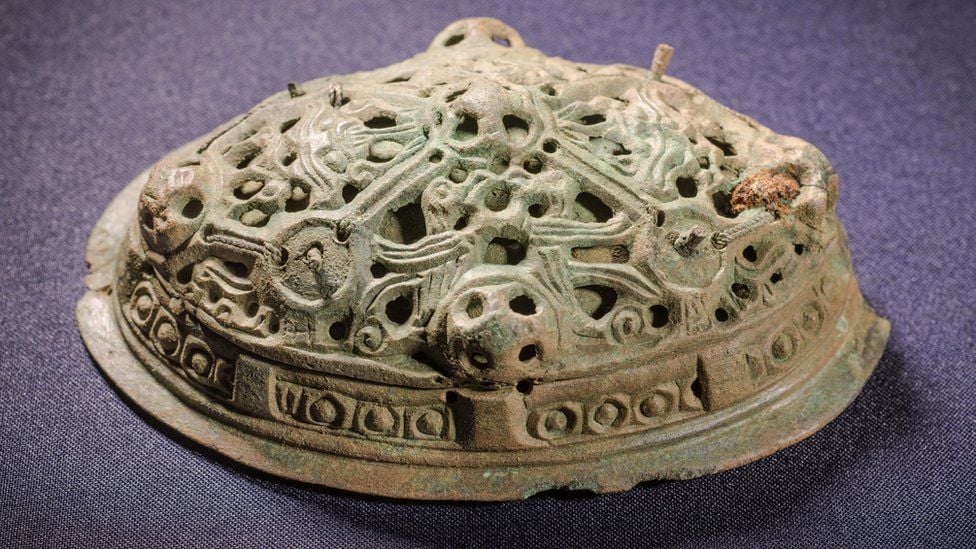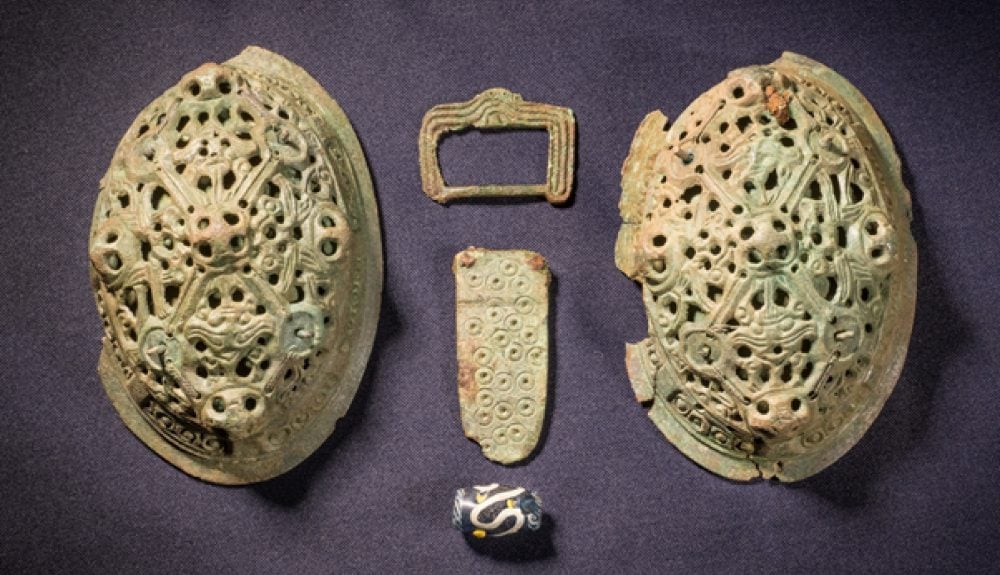Archaeology & History
Isle of Wo-Man? Two 1,000-Year-Old Brooches Discovered on the U.K. Island Suggest the Presence of Female Vikings
The ornate bronze objects went on view for the first time this month.

The ornate bronze objects went on view for the first time this month.

Artnet News

A pair of 1,000-year-old brooches discovered on the Isle of Man have historians—and now the public—questioning the long-held belief that only male Vikings settled on the island.
The ornate oval brooches, made from bronze and embellished with silver wire, are believed to have been created around A.D. 900—950. They went on display for the first time last week at the Manx Museum in the capital city of Douglas.
“The Isle of Man has a rich Viking heritage,” Allison Fox, curator of archaeology for Manx National Heritage, said in a statement. However, she noted, “This type of brooch, worn by Scandinavian women in the Viking Age and usually found in graves, has been missing so far.”
Without evidence of female presence, it has historically been theorized that when Viking ships landed on the island (which sits between Britain and Ireland in the Irish Sea) in the 800s, they carried only men.
Speaking to the British newspaper i, the curator added that the discovery showed that experts needed to “reassess these assumptions” and consider that those ships brought over “a new, mixed community.”

Two brooches, a belt buckle, and a glass bead discovered on the Isle of Man in 2018. Courtesy of the Manx Museum.
Metal detectorists John Crowe and Craig Evans discovered the brooches in December 2018, along with a decorated glass bead and a bronze belt buckle. Shortly thereafter, the objects were sent to the Manx National Heritage, a charity responsible for the island’s cultural patrimony, for cleaning and conservation. The items were declared treasure in July 2020.
“John and I knew straight away that our discovery was very special,” Evans recalled, “and it’s great to see the brooches cleaned and conserved.”
Oval brooches of the kind discovered on the Isle of Man were relatively common in Viking-era Scandinavia, the museum explained in its statement, suggesting that the original owner was likely of northern origin. The bead and belt buckle, meanwhile, are thought to have been created in what is today the United Kingdom.
Fox surmised, “Although proud of her Scandinavian roots, this particular pagan lady also wore local fashions.”